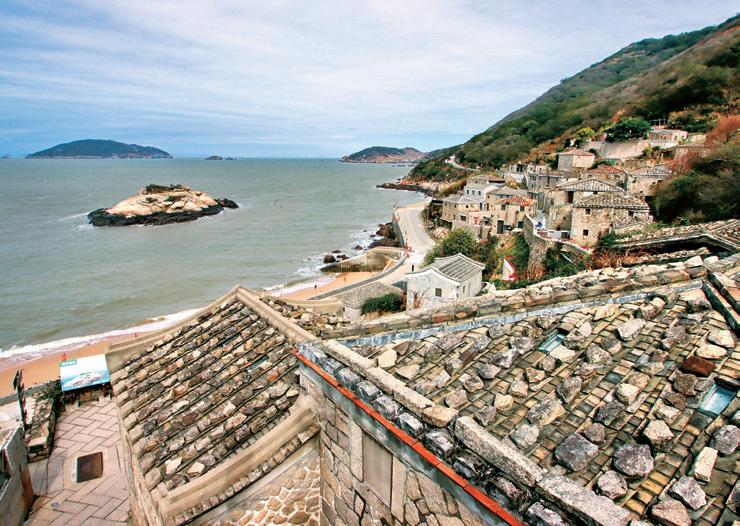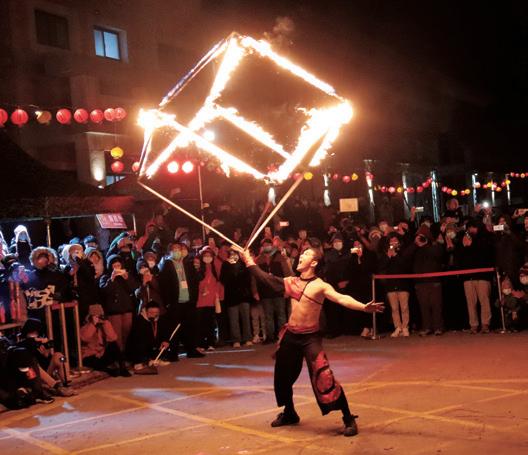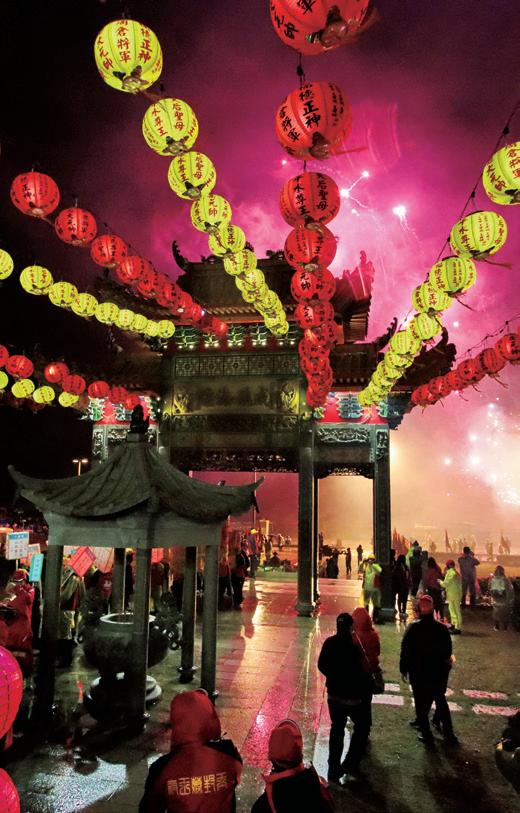
1 minute read
The Baiming Ceremony on the Matsu Islands
Located northwest of Taiwan, the Matsu archipelago consists of 36 islands. It is known for its unique mix of military posts, natural beauty, and cultural heritage. Seen as Taiwan’s fortress at the northern end of the Taiwan Strait the islands also serve as an important migration stop for numerous species of birds. Matsu is home to nearly 14,000 people who speak both Mandarin Chinese as well as the Fuzhou dialect.
The winters in Matsu are often harsh, but nevertheless on the 12 th day of the Lunar New Year locals and visitors alike will flock to Beigan Island ( 北竿 ) to take part in the Baiming ( 擺暝 ; Baiman in Fuzhou dialect) ceremony. During Baiming offerings are made to the gods at night. This traditional practice has been passed down from generation to generation with worship rituals taking place at different temples for different gods each night. It is the most important event on the island’s cultural calendar and a time when people come together to celebrate with each other and with the gods.
Advertisement
When you see colorful “wind lanterns” hung in doorways and hear locals, both young and old, dressed in traditional clothing playing drums and gongs, known as daguban, you know Baiming has started. Over several days, people carry offerings of food, incense, and flowers to local temples, and place them in front of the main alters to pay homage to gods and ancestors.
The Baiming ceremony is a highly choreographed event and also an opportunity for the people of Matsu to come together and socialize. The celebration sees no boundaries. People gather at temples, homes, and on the streets to eat, drink, and share hospitality and happiness.



Baiming reaches its peak when the palanquins, a symbol of the gods, are taken on processions around the island. On the 13th day of the Lunar calendar, people of Banli village for example have a procession where the palanquin for the God of the White Horse, a local deity, is carried to the temple of the God of Pingshui at Baisha, two kilometers away. Palanquins will meet each other along the way, and the mighty sound of the daguban will reverberate along the beaches of the island! On the return trip, households will burn hay as a way of thanking the god’s white horse and to ask for protection. Fireworks, burning flames, and the passion of the people make one forget about Matsu’s cold weather.
The Baiming ceremony is a testament to the resilience and rich cultural heritage of the people of Matsu. It is an event that should be experienced by anyone interested in the traditions and culture of Taiwan.








